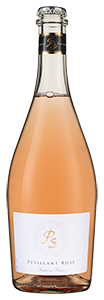Filter by
- Much-loved PS in fine, off-dry, sparkling form. Delicious, ripe, berry fruit with a creamy moussefrom £8.99 per bottlewhen you mix 6+SAVE £36.00
- Showing (1 to 1 of 1)
1
Page 1 of 1
Wine FAQs
What is Pauillac wine?
Pauillac wine comes from the Pauillac (pronounced po-yak) area located within the Médoc, part of France’s famous Bordeaux wine region. The Médoc, and Pauillac in particular, is renowned for producing some of the world’s most outstanding and sought-after red wines. Its tempered climate, moderate slopes and gravel-rich soils create the ideal conditions for grape growing, particularly for Cabernet Sauvignon. These grapes are often blended with Merlot, Cabernet Franc, Petit Verdot, Malbec and Carménère to create rich, full-bodied red blends with exceptional structure and ageing potential. Although Bordeaux has only five First Growth wine estates, three of them – Lafite Rothschild, Latour and Mouton Rothschild – call Pauillac home. Despite their premium price tag, Pauillac wines maintain an international reputation as complex red wines worth the investment. It’s a top choice for wine lovers looking for the best of the best.
Where is Pauillac?
The appellation of Pauillac lies within the Bordeaux wine region in southwest France. Centred around the town of the same name, it is situated on the Left Bank of the Gironde estuary, within the Médoc region. Other well-known Médoc appellations surround it – Saint-Julien lies to Pauillac’s south and Saint-Estèphe is to the north. Like most of the Médoc region, Pauillac has easy-draining gravel soils and a temperate climate, perfect for growing well-structured red grapes. Winters here are mild and summers are warm, though not excessively hot, thanks to the cooling influence of the Gironde estuary. The temperate climate aids in the slow, steady ripening of the grapes, contributing to their complexity and balance. To the west of Pauillac and the rest of the Médoc, the Landes forest serves as a natural barrier, protecting the vineyards from the potentially harsh Atlantic winds.
What is Pauillac’s wine history?
Pauillac has a long, rich history as a sought-after wine region, with its origins dating back to the Roman era. However, it wasn’t until the 18th century that the region began to gain acclaim for its premium wines. Pauillac’s position on the Gironde estuary made it the ideal place to ship wines internationally, boosting the region’s reputation. In the 1855 Bordeaux Classification, two of the five First Growths – the highest rank possible – were from Pauillac: Château Lafite Rothschild and Château Latour. Château Mouton Rothschild was elevated to First Growth status in 1973, the only change ever made to the 1855 classification. This classification was requested by Napoleon III for the Exposition Universelle de Paris and continues to influence the wine market today. Pauillac wines have maintained their standing over the centuries. Today, Pauillac wines, especially those from the acclaimed estates, are among the most prestigious, expensive and sought-after wines worldwide.
What grapes are grown in the Pauillac region?
Pauillac is home to Bordeaux’s six iconic red grape varieties – Cabernet Sauvignon, Merlot, Cabernet Franc, Petit Verdot, Malbec and a small amount of Carménère. Cabernet Sauvignon is the region’s most predominant variety, grown extensively throughout the region’s vineyards. Even though Cabernet Sauvignon dominates, the wines from Pauillac are typically blends. Other varieties such as Merlot, Cabernet Franc, Petit Verdot, Malbec and Carménère are often used to add complexity and balance to the wines. The terroir of Pauillac, particularly its gravel-rich soils, is exceptionally well-suited to Cabernet Sauvignon. This combination leads to wines that have great structure and can age for many years. Each grape variety contributes to Pauillac’s renowned flavour profile. Cabernet Sauvignon lends structure and notes of blackcurrant and spice, while Merlot gives a softer, plummier character. Cabernet Franc can inject a touch of freshness, and Petit Verdot adds colour and vibrancy.
What are the best-known Pauillac wines?
Pauillac is famous for its high-quality Bordeaux-style red blends, with several revered estates producing globally acclaimed wines. These wines are typically full-bodied and rich, with the perfect balance between acidity and fruitiness, robust structure and excellent ageing potential. Although made primarily from the Cabernet Sauvignon grape, the wines’ characters and flavours can vary between the different chateaux.
- Château Lafite Rothschild is famous not only for its high-quality Bordeaux blends but also for its consistency. The red blends from this estate are known for their depth and robust tannins. They offer flavours of rich, dark fruits including cassis, along with notable hints of cedar and spices due to oak ageing.
- Château Latour wines are highly prized for their intensity and excellent ageing potential. They have characteristically deep, dark flavours of black plum complemented by savoury hints of tobacco, smoke and leather.
- Château Mouton Rothschild wines are celebrated for being some of the most opulent and rich in the Pauillac appellation, with a distinctive signature flavour of blackcurrants. This Château is also famous for having a different artist design its label for each vintage.
What foods can I pair with Pauillac wines?
Pauillac wines, known for their deep, rich flavours and robust structure, pair well with equally rich and hearty dishes. Grilled, roasted or braised red meats such as beef, lamb and venison are deliciously complemented by Pauillac wines’ signature dark fruit flavours and smoky hints. This pairing works from simple steaks to more complex dishes such as beef bourguignon or a hearty casserole. Game birds, including duck or pheasant, can also pair well with Pauillac wines. The savoury richness of the game meat balances the powerful flavours of the wine. If you’re looking for a vegetarian option, dishes centred around earthy mushrooms can be a good choice. The umami flavours in the mushrooms complement the tobacco, smoke and cedar hints in the wine. Strong, aged cheeses, such as blue cheese, aged Cheddar and Comté, can also stand up to the powerful flavours of a Pauillac.





